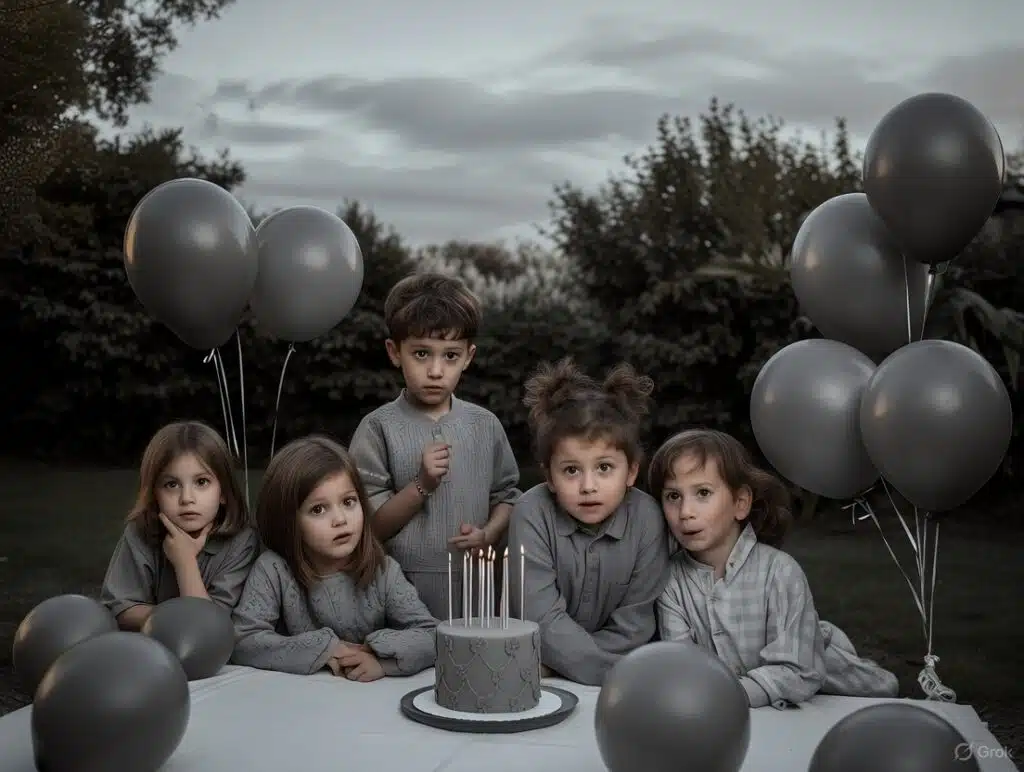Imagine a Colorless World
Close your eyes for a second and think about your favorite color. Maybe it’s the bright blue of the sky, the warm yellow of the sun, or the deep red of a rose. Now imagine opening your eyes one morning and discovering that every single thing around you—your clothes, your toys, the trees, and even the rainbow—was only black, white, or gray. No more colors at all! This strange idea might sound like a black-and-white movie, but let’s explore what life would be like if colors didn’t exist.
What Are Colors, Anyway?
Colors are not just paint or crayons in a box. They are actually how our eyes and brain work together with light.
- Light from the sun or a bulb is made of many “invisible beams” called wavelengths.
- Our eyes pick up these wavelengths and translate them into colors.
- Without this magic teamwork, we wouldn’t see the difference between green grass, red apples, or purple flowers.
So if colors didn’t exist, it would mean our eyes and brain couldn’t translate light into those bright shades anymore. The whole world would turn into shades of gray—just like an old TV show.
What Would Nature Look Like?
Nature is bursting with colors right now. Flowers bloom in reds, pinks, and yellows to attract bees. Birds show off shiny feathers to impress their mates. Fruits like oranges, bananas, and strawberries use color to say, “Eat me, I’m ripe!”
If all of this turned gray:
- Flowers wouldn’t be able to “signal” insects as easily. Bees might get confused!
- Fruits could still be tasty but hard to know if they’re ripe.
- Forests would look dull, with trees in only dark and light shades.
Imagine going to a garden and seeing only black-and-white roses. Beautiful in a way, but not nearly as exciting as a rainbow of flowers.

How Would Animals Survive?
Colors aren’t just pretty; they help animals survive.
- Camouflage: Many animals, like chameleons or tigers, use colors to blend into their surroundings. Without colors, camouflage wouldn’t work, and hunting would be harder.
- Warnings: Bright red frogs or yellow snakes usually warn predators that they’re poisonous. Without color, these warnings vanish—predators could make dangerous mistakes.
- Attraction: Many birds, butterflies, and fish use colorful patterns to find mates. Without colors, they might struggle to continue their species.
The animal kingdom would become a very confusing, and sometimes dangerous, place.
The Human World Without Color
Now think about people. How would life change for us if we lived in a grayscale world?
- Clothes: No more favorite colored T-shirts! Every outfit would look the same in gray. Fashion would become about shapes and patterns instead of colors.
- Art and Creativity: Paintings, cartoons, and books would all lose their colorful sparkle. Artists would need to focus on texture, shading, and imagination.
- Food: Imagine gray pizza, gray strawberries, and gray ice cream. They might taste the same, but would you want to eat them? Our appetite often depends on how colorful food looks.
- Traffic Lights: Without red, yellow, and green, driving would be super confusing! We’d have to invent new shapes or signals for safety.

The Emotional Impact of No Colors
Colors also affect our feelings.
- Blue can make us feel calm.
- Yellow often feels cheerful.
- Red can feel exciting or intense.
Without colors, emotions might feel muted. Rooms would look less cozy, festivals less fun, and life less vibrant. A birthday party with gray balloons and a gray cake just wouldn’t feel the same.
But on the other hand, some people might find peace in a grayscale world. Without distracting colors, life could feel simpler and calmer—like living in a quiet black-and-white sketch.
Science in a World Without Colors
Scientists use colors in many ways:
- Doctors use imaging scans with color highlights to check our bodies.
- Maps use colors to show countries, mountains, and oceans.
- Space telescopes capture colorful photos of galaxies and stars.
Without color, science would need to invent new systems. Maybe instead of colors, we’d use patterns, numbers, or glowing brightness to represent data.
The Good Side of a Gray World
Even though it sounds dull, a colorless world might have some positives:
- People would judge others less by appearances since everyone’s clothing, skin, and surroundings would look similar.
- Art could evolve into something totally new, focusing on shapes, shadows, and textures.
- Technology might invent exciting new ways to “simulate” colors—maybe glowing holograms or scents that represent different shades.
Can We Imagine Life in Grayscale?
It’s hard to picture life without colors because they’re such a big part of who we are. But people who are color-blind already experience the world with fewer shades. They prove that even without full colors, life is still rich, fun, and meaningful.
If the whole world turned gray tomorrow, we’d miss rainbows, sunsets, and fireworks. But humans are amazing at adapting—we’d learn new ways to celebrate beauty and express ourselves, even in black, white, and gray.
Conclusion: Would You Miss Colors?
Suppose colors didn’t exist, and the world became one big grayscale movie. Life would feel very different—nature, animals, art, and emotions would all change. But humans and animals would find new ways to survive and thrive.
So the next time you see a rainbow, a shiny blue butterfly, or even a simple green leaf, take a moment to appreciate the magic of colors. They make life brighter, happier, and full of wonder. Imagine living without them—you might just realize how lucky we are to see the world in all its colorful glory!

